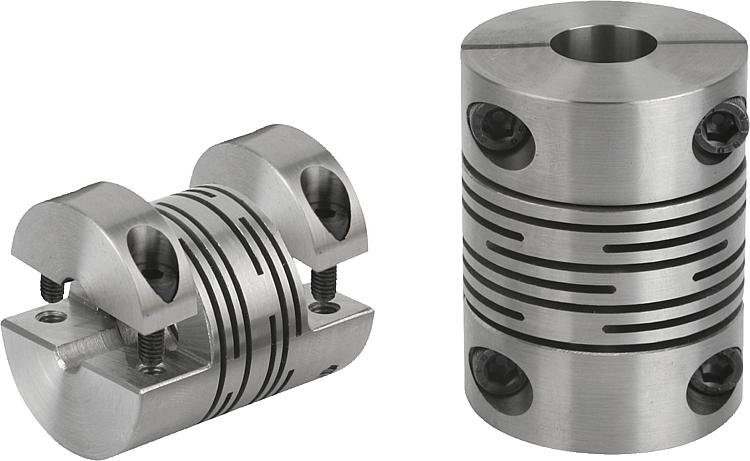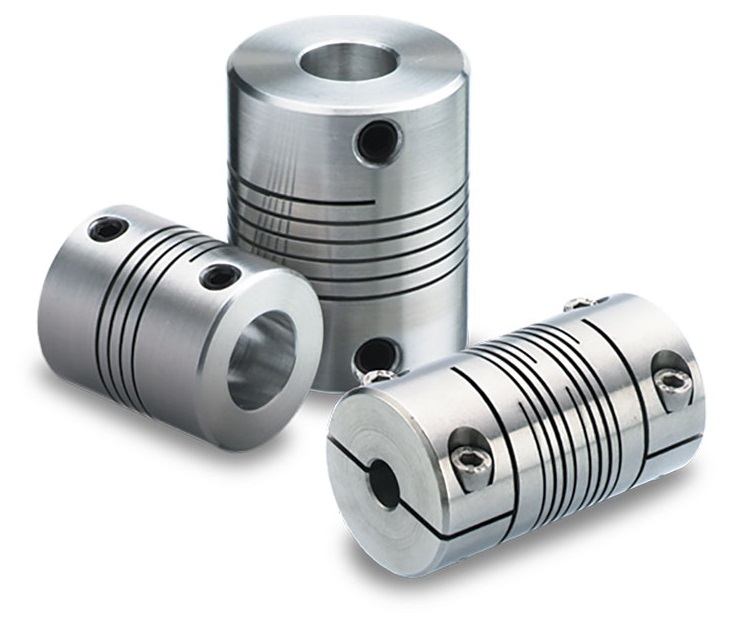“`html
Introduction to Beam Coupling
Beam couplings, also known as helical couplings, are mechanical devices designed to transmit torque between two non-coaxial shafts. They are characterized by their unique helical cut pattern, which offers several advantages over other types of couplings. In this introduction, we will delve into the design, features, and applications of beam couplings, particularly focusing on their suitability for climbing equipment.
Design and Functionality
Beam couplings consist of a single or multiple-piece design with spiraled cuts. This design allows for angular misalignment, parallel offset, and axial motion, making them an ideal choice for precise motion transfer. The flexibility of the helical structure absorbs vibrations and shock loads, protecting the connected components from damage.
Key Features
- High Misalignment Capability: Beam couplings can accommodate higher degrees of misalignment compared to rigid couplings, ensuring smooth operation under misaligned conditions.
- Durability: Made from robust materials, beam couplings are designed to withstand harsh conditions, making them durable for long-term use.
- Maintenance-Free: These couplings require no lubrication, offering a maintenance-free solution for power transmission applications.

Applications in Climbing Equipment
Beam couplings are particularly suited for climbing equipment, where precision, reliability, and durability are paramount. The flexibility and misalignment capabilities ensure that climbing devices operate smoothly, enhancing the safety and performance of the equipment.
Advantages of Beam Coupling for Climbing Equipment
When it comes to climbing equipment, the choice of components is critical for ensuring performance and safety. Beam couplings offer several advantages:
- Enhanced Precision: The flexibility of beam couplings allows for precise motion control, critical in climbing equipment for accurate movements and adjustments.
- Shock Absorption: The inherent design of beam couplings offers excellent vibration and shock absorption, protecting sensitive components in climbing devices.
- Accommodates Misalignment: The ability to accommodate misalignment ensures that climbing equipment remains operational even under non-ideal conditions, enhancing safety and reliability.
- High Torque Capacity: Beam couplings can transmit high levels of torque, essential for the heavy-duty operation of climbing equipment.
- Maintenance-Free Operation: The lack of lubrication requirements reduces the maintenance effort, ensuring that climbing equipment is always ready for use.
Working Principle of Beam Coupling
The operation of beam couplings is based on the flexibility of their helical cuts. As torque is applied, the helical structure deforms to accommodate misalignment, while still transmitting torque efficiently. This section explains the working principle in three parts:
1. Torque Transmission: Torque is transmitted through the coupling via the helical cuts, which flex to allow motion and absorb shocks.

2. Misalignment Compensation: The design of the beam coupling allows it to flex in response to angular, parallel, and axial misalignments, ensuring continuous operation.
3. Shock and Vibration Damping: The flexibility of the coupling also serves to dampen vibrations and absorb shocks, protecting connected components from damage.
Selecting the Right Beam Coupling
Choosing the correct beam coupling for climbing equipment involves several considerations:
- Alignment Requirements: Assess the potential misalignment between shafts to ensure the coupling can accommodate it.
- Torque Needs: Determine the torque requirements of the application to select a coupling with adequate capacity.
- Material Compatibility: Choose a material that offers the necessary strength and corrosion resistance for the operating environment.
- Size and Space Constraints: Consider the physical space available to ensure the coupling fits without interfering with other components.
- Operational Conditions: Evaluate the environmental conditions, such as temperature and exposure to chemicals, to select a suitable coupling.
Maintenance of Beam Coupling
Maintaining beam couplings involves regular inspections for wear and damage, ensuring that the coupling is free from debris, and checking for signs of misalignment or improper installation. Although beam couplings are essentially maintenance-free, periodic checks are crucial to guarantee their longevity and optimal performance. Proper maintenance of beam couplings is essential for the safety and reliability of climbing equipment, as it prevents unexpected failures and extends the life of the components.
About HZPT

HZPT, established in 2006, is a premier manufacturer and exporter specialized in the design, development, and production of couplings. With a 16-year-strong design and R&D team, we customize products to meet global client requirements, supported by a comprehensive quality inspection system from raw materials to finished products. All our products are CE and TUV certified, emphasizing our commitment to quality and customer satisfaction. Our ethos, “Customer satisfaction, our pursuit,” drives us to offer the highest product quality, exceptional services, and competitive prices. Our main clients in Europe and America hold us in high regard for our radial elastic couplings, tire couplings, universal couplings, drum gear couplings, plum elastic couplings, rigid couplings, cross shaft couplings, roller chain couplings, diaphragm couplings, and more. Choosing HZPT means opting for reliability, quality, and value in your coupling solutions. We look forward to establishing successful business relationships with new clients around the world.
“`
